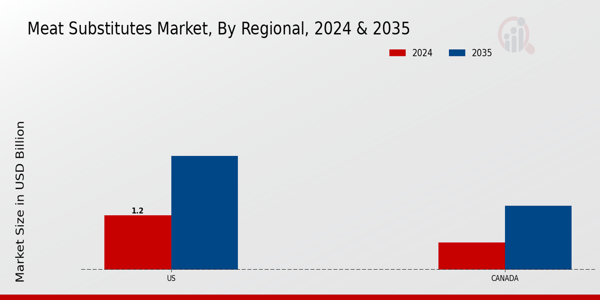The North America Meat Substitutes Market has witnessed significant growth owing to increasing consumer awareness regarding health benefits and environmental sustainability. As plant-based diets gain popularity, the competition among key players in the market has intensified, fueling innovation and product diversification.
Companies in this sector are competing not only on the basis of product quality and taste but also on ethical sourcing, nutritional value, and brand loyalty. The competitive landscape consists of established biodegradable and ingredient-driven brands that are constantly refining their offerings to meet the evolving preferences of consumers.
The market is characterized by a blend of legacy food companies expanding into meat alternatives and startups developing niche products, creating a vibrant ecosystem of diverse choices for consumers.
Gardein has established itself as a prominent player in the North America Meat Substitutes Market, recognized for its wide range of plant-based meat products tailored to meet the tastes of both vegetarians and omnivores.
The brand is particularly strong in frozen meat alternatives, offering an array of options such as burgers, meatless meatballs, and other substitutes that closely mimic the texture and flavor of animal protein. Gardein's commitment to high-quality ingredients and sustainable practices has bolstered its reputation among health-conscious consumers.
The company's strategy focuses on accessibility and convenience, making its products easy to incorporate into everyday meals, which has contributed to its sustained growth and market presence in North America. Effective marketing campaigns and collaborations with retailers have further solidified Gardein’s position, enabling it to capture a significant share of the meat substitute market.
Quorn Foods has also carved out a notable niche within the North America Meat Substitutes Market, leveraging its extensive range of mycoprotein-based products to cater to an environmentally aware consumer base. Known for its unique fermentation process, Quorn offers an array of meat alternatives including chicken-style nuggets and ground beef products.
This innovative approach not only enhances the nutritional profile of the offerings but also appeals to a growing demographic interested in sustainable eating practices. Quorn has established strategic partnerships with various distribution channels to increase its availability across grocery stores and food service sections, enhancing its market presence.
The company invests in research and development to expand its product line and occasionally engages in mergers and acquisitions to enhance its capabilities and product offerings in North America. This proactive approach to strengthening its portfolio and commitment to high-quality, sustainable ingredients positions Quorn as a formidable competitor in the evolving landscape of meat substitutes.
























Leave a Comment